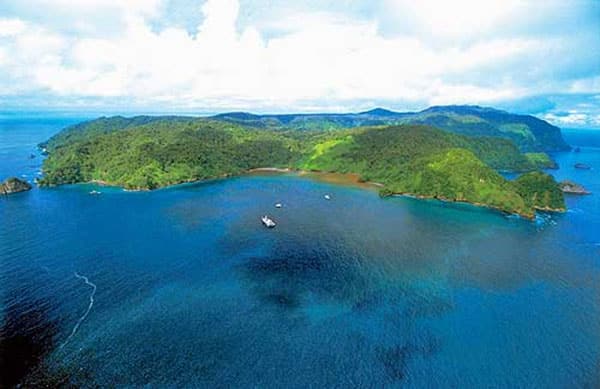
cocos
We have some good news from the Costa Rican government that should greatly improve the fishery here. Even though several tournament records were broken this year, it is always good news to have stricter laws to support the resource. The last two years have been banner years for big tuna in June so the latest news comes just in time.
Literally, just days before leaving office, President Laura Chinchilla signed a decree that will be of great importance to the quality of sport fishing and marine resources in Costa Rica. In an effort to protect the fishery resources of the country, President Chinchilla signed an executive order to delineate the Exclusive Economic Zone of the Pacific which corresponds to Costa Rica and, so, establishes new rules for catching tuna and related species by commercial fishing.
Some of the highlights of the decree include the restricted zone where no purse seining is allowed.
Two polygons have been established:
The first comprises the area between the low water mark and 60 nautical miles along the entire Pacific coast of Costa Rica.
The second is an ocean polygon , which runs from the intersection of 7th North parallel with the east boundary of the Exclusive (EEZ ) Economic Zone of Costa Rica and from there heading west on North 7th parallel to its intersection with the meridian 89 ° West , and from there along the meridian 89 ° West , southbound , to its intersection with latitude 5 ° north and from there heading East , following the 5th parallel north to intersect the eastern boundary of the EEZ Costa Rica.
The area of Cocos Island National Park and Marine Management Area Seamounts are excluded from the regulations established in this decree and shall be governed by the amount of protected areas and their own management plan legislation which already exists. The use of purse seine boats for tuna within 60 miles of the low tide line along the entire coast of Costa Rica is now prohibited.
In these areas, tuna can be targeted by longlines and sport fishing vessels. Within a 12 month period, INCOPESCA, the governing board of fisheries in Costa Rica, must develop and implement an Integrated Management Plan mainly oriented to tuna fisheries but including the reduction of by-catch of non-target species in all types of fishing. Representatives from the commercial, sport fishing, and tourist fishing sectors must be included in the process.
Polygons described in the previous article can be made tuna fishing by longline vessels and advanced medium- scale and always when technical conditions contained in this regulation are met. Other fishing gear permitted in this area are sugar cane , trolling , rope, and hook.
The Costa Rican Institute of Fishing and Aquaculture will develop and implement, in a period not exceeding twelve months from the effective date of this order, an Integrated Management Plan for the management of fisheries in the Exclusive Economic Zone of Costa Rica mainly oriented to the fishery resource tuna and other species of sport and commercial attractions , including reducing the by-catch of non-target marine species fishery .
This Integrated Management Plan shall include a research program, as well as the behavior of migratory movements and habitat use of ocean tuna by using technology file marks. These marks will be the Inter – American Tropical Tuna Commission ( CIAT ). Both are licensed as seine fleets (fishing tuna in Costa Rica), process plants , the longline fishing fleet, and the fleet of sport fishing. Tourists must participate .
Enrique Ramirez, director of FECOP, the sport fishing lobby, supplied much of the data to influence the President’s decision and said the decree also included:
The requirement that all longline gear must be identified in the water with the boat license number;
The requirement that longliners must install VMS ( Vessel Monitoring Systems) to monitor their movements at any time;
AdvertisementThe requirement that an “observers on board” program will be developed and the commercial fishing vessels must comply with it when addressed.
There is an obligation to use only circle hooks to avoid turtle damage.








